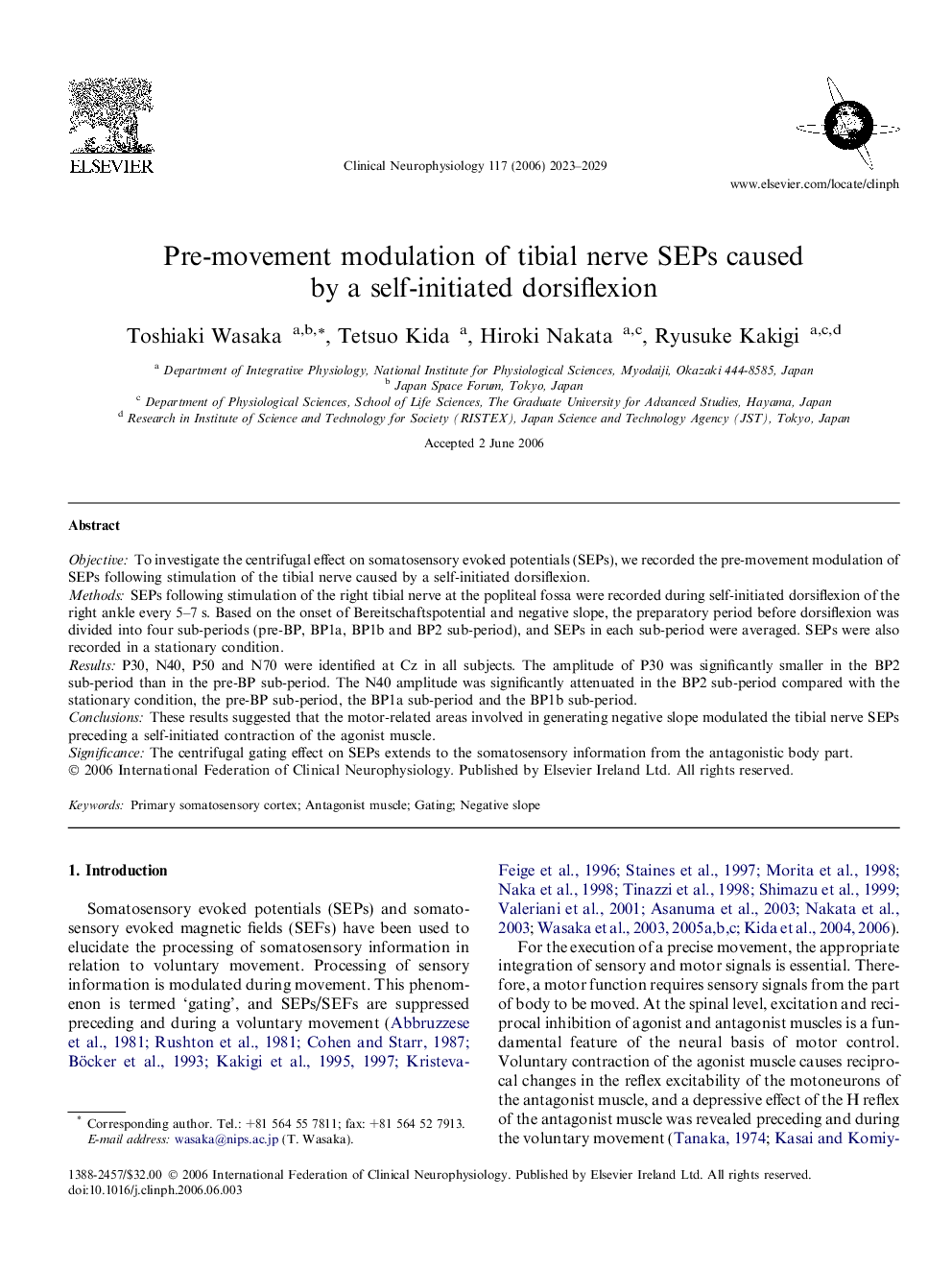| Article ID | Journal | Published Year | Pages | File Type |
|---|---|---|---|---|
| 3047816 | Clinical Neurophysiology | 2006 | 7 Pages |
ObjectiveTo investigate the centrifugal effect on somatosensory evoked potentials (SEPs), we recorded the pre-movement modulation of SEPs following stimulation of the tibial nerve caused by a self-initiated dorsiflexion.MethodsSEPs following stimulation of the right tibial nerve at the popliteal fossa were recorded during self-initiated dorsiflexion of the right ankle every 5–7 s. Based on the onset of Bereitschaftspotential and negative slope, the preparatory period before dorsiflexion was divided into four sub-periods (pre-BP, BP1a, BP1b and BP2 sub-period), and SEPs in each sub-period were averaged. SEPs were also recorded in a stationary condition.ResultsP30, N40, P50 and N70 were identified at Cz in all subjects. The amplitude of P30 was significantly smaller in the BP2 sub-period than in the pre-BP sub-period. The N40 amplitude was significantly attenuated in the BP2 sub-period compared with the stationary condition, the pre-BP sub-period, the BP1a sub-period and the BP1b sub-period.ConclusionsThese results suggested that the motor-related areas involved in generating negative slope modulated the tibial nerve SEPs preceding a self-initiated contraction of the agonist muscle.SignificanceThe centrifugal gating effect on SEPs extends to the somatosensory information from the antagonistic body part.
